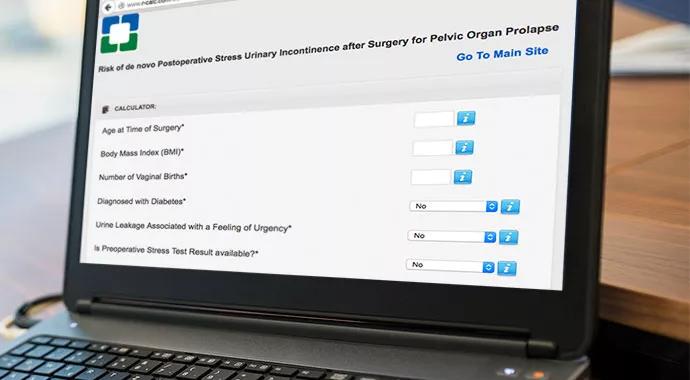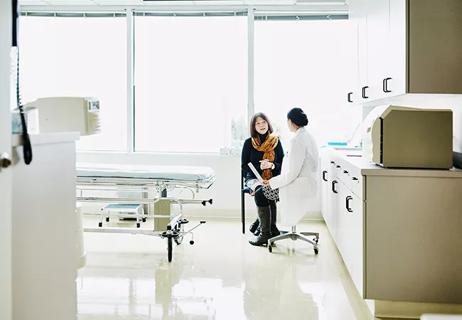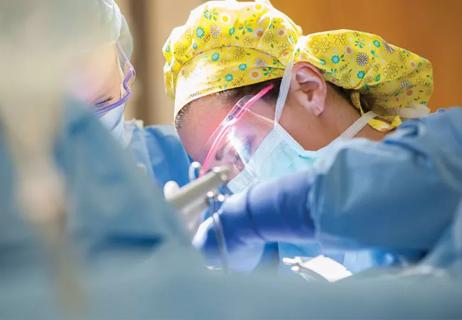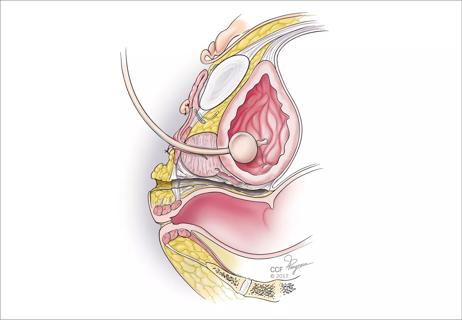Cleveland Clinic’s new online tool better predicts outcomes

By Dr. John Jelovsek
Cleveland Clinic is a non-profit academic medical center. Advertising on our site helps support our mission. We do not endorse non-Cleveland Clinic products or services. Policy
A significant number of women with pelvic organ prolapse develop bothersome stress urinary incontinence (SUI) after transvaginal prolapse surgery or sacrocolpopexy. A concomitant midurethral sling, Burch cystourethropexy or other procedure may be recommended as a result.
Some surgeons use preoperative prolapse reduction urinary stress tests to gauge the risk of de novo SUI, but the tests’ sensitivity is just 17 to 39 percent. Other surgeons favor a “wait and see” approach.
A better means of calculating risk is needed in this era of personalized medicine, especially considering patients’ expanded role in choosing treatments that impact quality of life.
An NICHD Pelvic Floor Disorders Network study1 sought to develop and test a personalized model for better predicting the risk of de novo SUI after pelvic organ prolapse (POP) surgery.
We hypothesized that a prediction model using patient and testing characteristics from two large POP surgery trials could refine the risk of developing de novo SUI within 12 months of vaginal prolapse surgery. We also believed this prediction model would outperform expert predictions.
We studied data from 465 randomized participants in the Outcomes Following Vaginal Prolapse Repair and Midurethral Sling (OPUS) trial, which estimated the de novo SUI prevalence within 12 months of vaginal POP surgery with or without a tension-free vaginal tape (TVT) sling.
We identified 12 possible preoperative predictors of postoperative de novo SUI: age, race, parity, body mass index, smoking, diabetes, strenuous physical activity, baseline urgency urinary incontinence symptoms, preoperative POP-Q (Pelvic Organ Prolapse Quantification System) stage, POPQ point Aa, positive preoperative prolapse reduction stress test, and a concomitant TVT.
Our primary clinical outcome was de novo SUI within 12 months of surgery, as determined by responses to Pelvic Floor Distress Inventory queries about leakage when coughing, sneezing or laughing; physically exercising (walking, running, aerobics or tennis); and lifting or bending over.
Adjusting for the 12 potential predictors through multivariable logistic regression analysis, we used step-down elimination to narrow them to seven: age, number of vaginal births, body mass index, preoperative stress test results, planned continence procedure at the time of POP surgery, urine leakage with urgency, and diabetes diagnosis.
We used the concordance index to assess the model’s ability to discriminate between high- and low-risk patients and used bias-corrected calibration plots to test model predictions versus actual predictions.
After internal validation using 1,000 bootstrap samples, we selected the best model for external validation using Colpopexy and Urinary Reduction Efforts (CARE) trial data. CARE estimated de novo SUI rates after open abdominal sacral colpopexy, with or without Burch urethropexy.
We also asked 22 experienced Pelvic Floor Disorders Network surgeons to clinically predict postoperative SUI for 32 randomly selected OPUS trial participants using the same predictors as our model.
We compared the prediction model’s “Area under the curve” data with experts’ predictions, preoperative prolapse reduction stress tests alone and data from 322 CARE participants.
We determined that the individualized risk prediction model was valid and outperformed both subspecialist predictions and preoperative stress test results.
The online calculator’s ease of use makes it a valuable tool for discussing vaginal POP surgery and concomitant continence surgery options with patients. The tool is available here.
John Jelovsek, MD, Associate Professor in Female Pelvic Medicine and Reconstructive Surgery and Vice Chair of Education for the Ob/Gyn & Women’s Health Institute, was principal investigator for the NICHD Pelvic Floor Disorders Network study. He may be reached at 216.444.2488 or jelovsj@ccf.org.

Deprivation is linked to impaired glucose intolerance and racial disparities

Artesunate ointment is safe well and tolerated patients with vulvar intraepithelial neoplasia

A case-based discussion of efficacy, eligibility and use

Workshop curriculum was valued by some, while others would have preferred time for themselves

Study finds lower incidence of endometriosis than in cisgender patients

Large randomized study compares embryo growth kinetics and live birth rates between culture media

Surgeon experience is key to reducing adverse events

Introducing Laura Detti, MD, newly appointed Chair of the Department of Subspecialty Care for Women’s Health